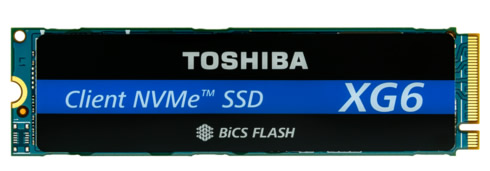
Toshiba Delivers First SSD Using 96-Layer 3D Flash Memory
Today Toshiba Memory has introduced a new lineup of solid state drives (SSDs) that are based on its 96-layer, BiCS FLASH 3D flash memory.
The first SSD to use this technology, the new XG6 series is targeted to the client PC, high-performance mobile, embedded, and gaming segments - as well as data center environments for boot drives in servers, caching and logging, and commodity storage.
Toshiba's 3-bit-per-cell (triple-level cell, TLC) BiCS FLASH technology improves the performance, density and efficiency of SSDs. And its 96-layer stacking process combines with circuit and manufacturing technology to achieve a capacity increase of approximately 40 percent per unit chip size over 64-layer 3D flash memory.

The introduction of the XG6 series paves the way for Toshiba client, data center and enterprise SSDs to migrate to 96-layer technology.
The new XG6 series is available in an M.2 2280 single-sided form factor and supports PCI Express 2 Generation 3x4 lane and NVM Express 3 revision 1.3a. A combination of efficiency and performance is a hallmark of the XG6 series, which consumes 4.7W or less of power and reaches up to 3,180MB/sec of sequential read and nearly 3,000MB/sec of sequential write, and up to 355,000 random read and 365,000 random write IOPS.
Additional Features Include:
- Security: Pyrite or self-encrypting drive models supporting TCG Opal Version 2.01, as well as support for block SID and digital signature
- Support for user-selectable over provisioning feature through NVMe command
- Enhanced SLC buffer to improve drive performance for client workloads





















